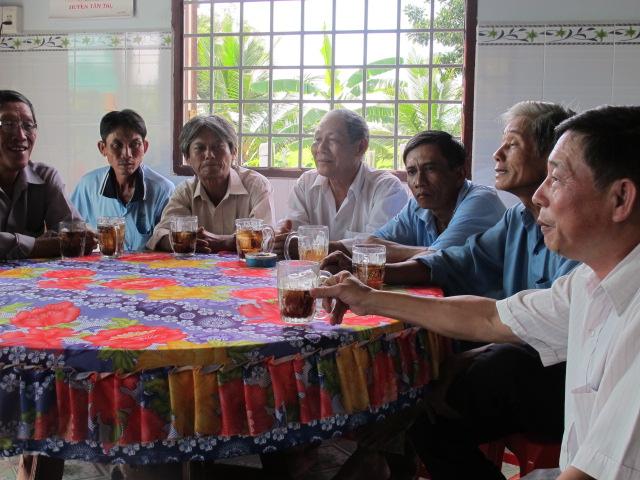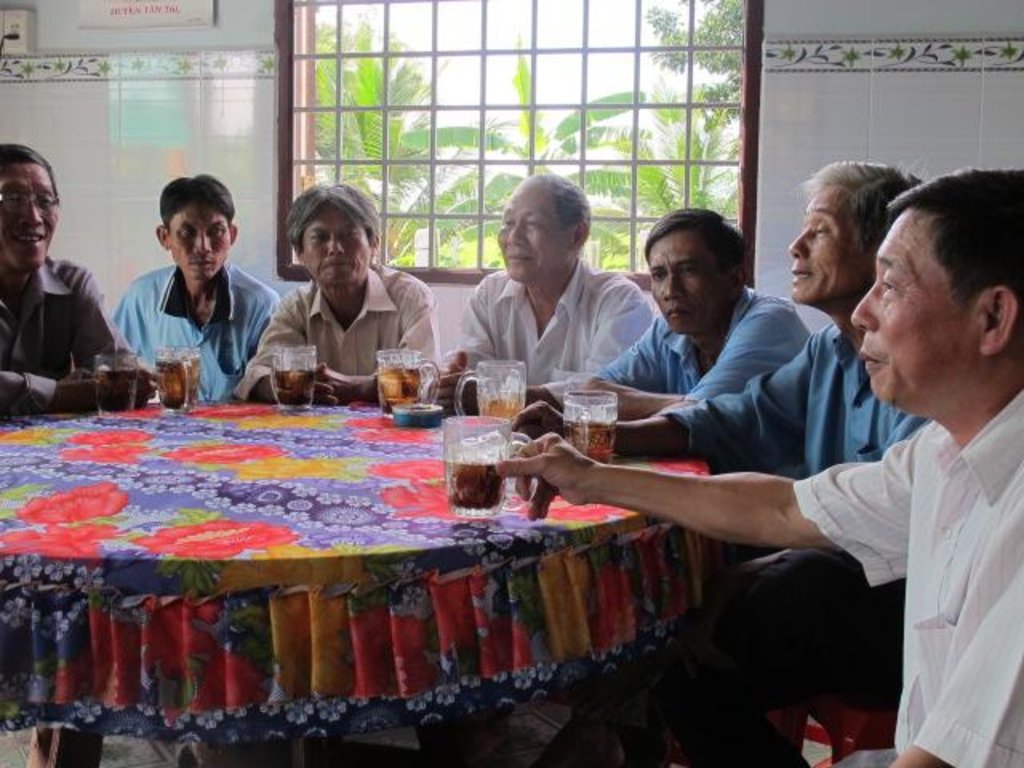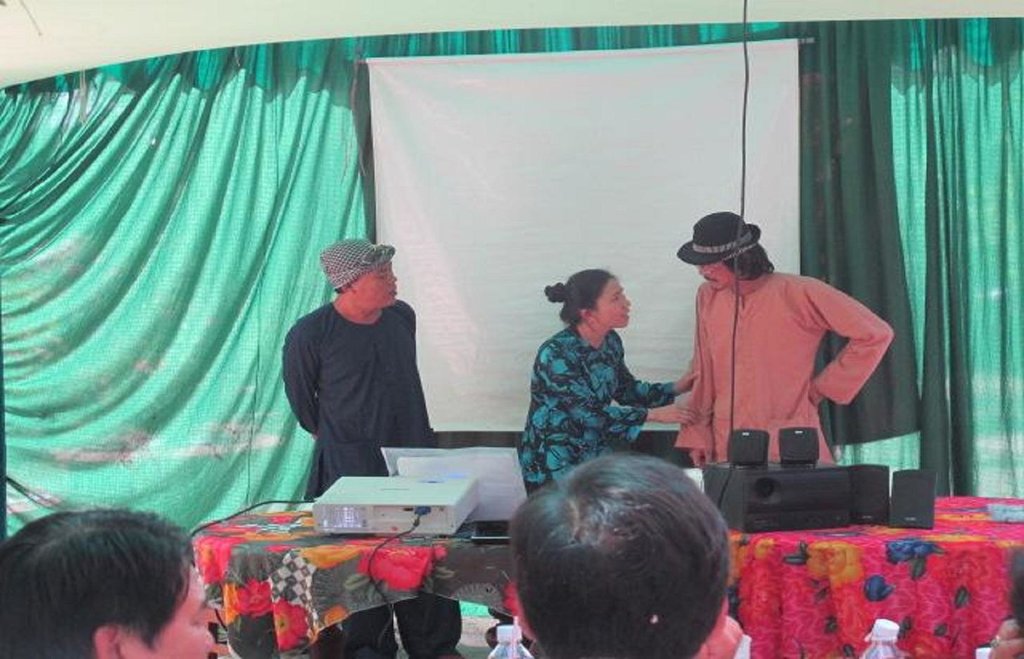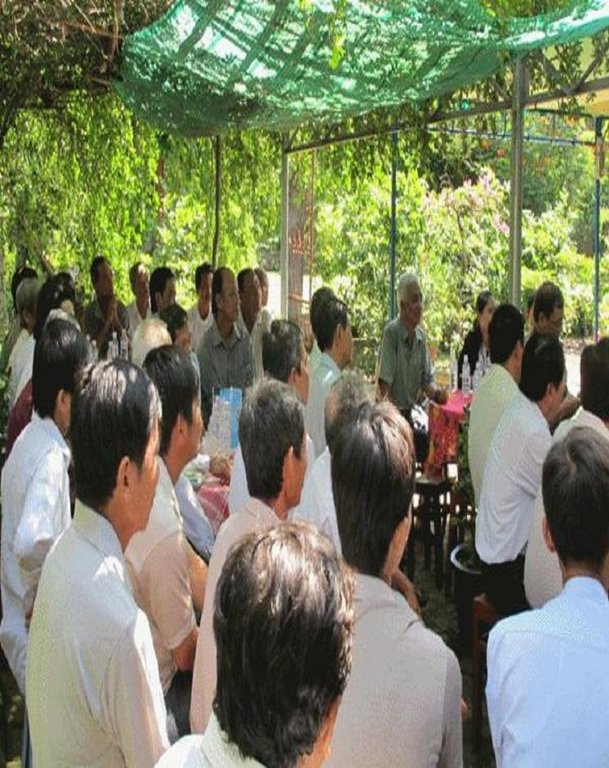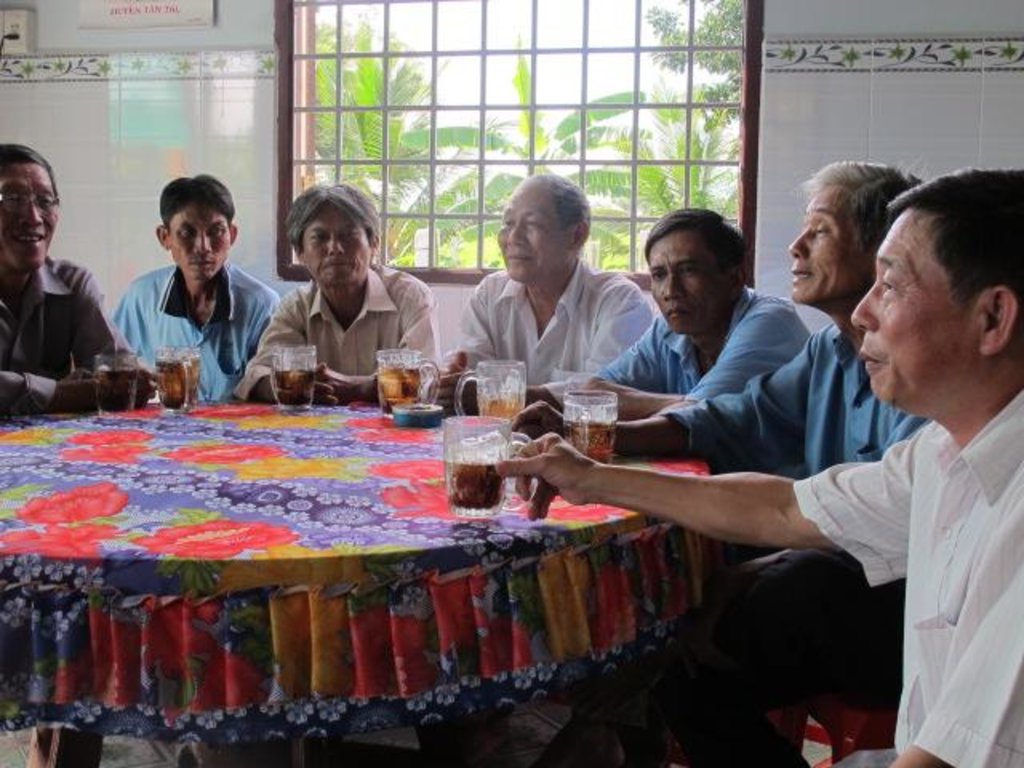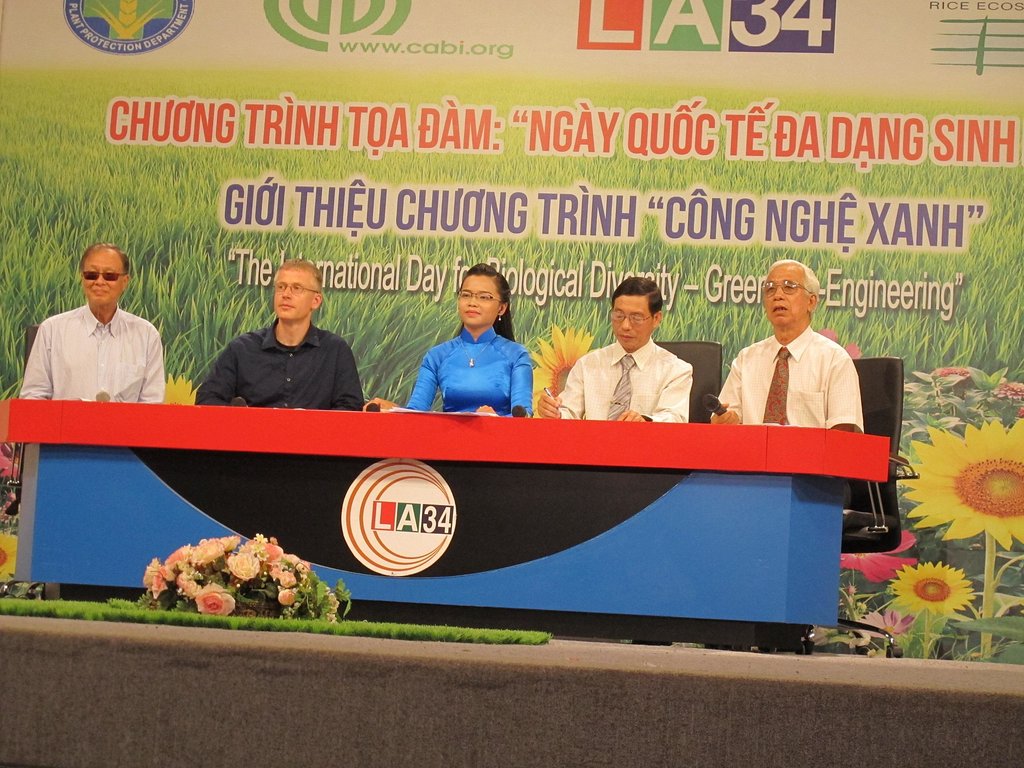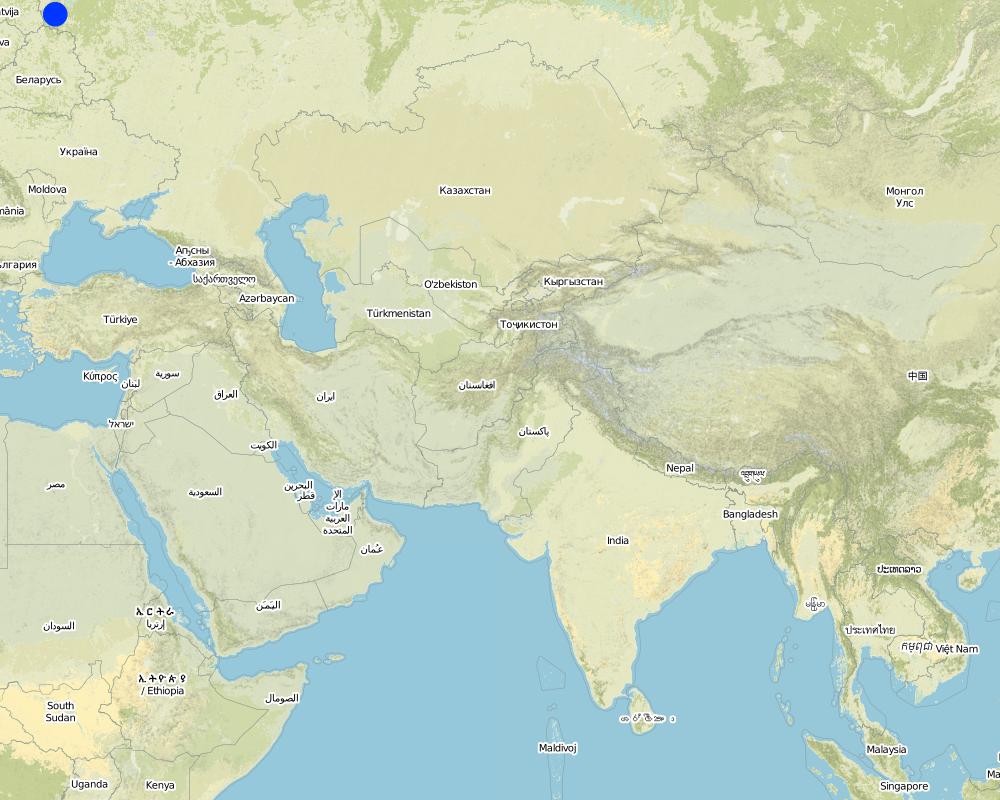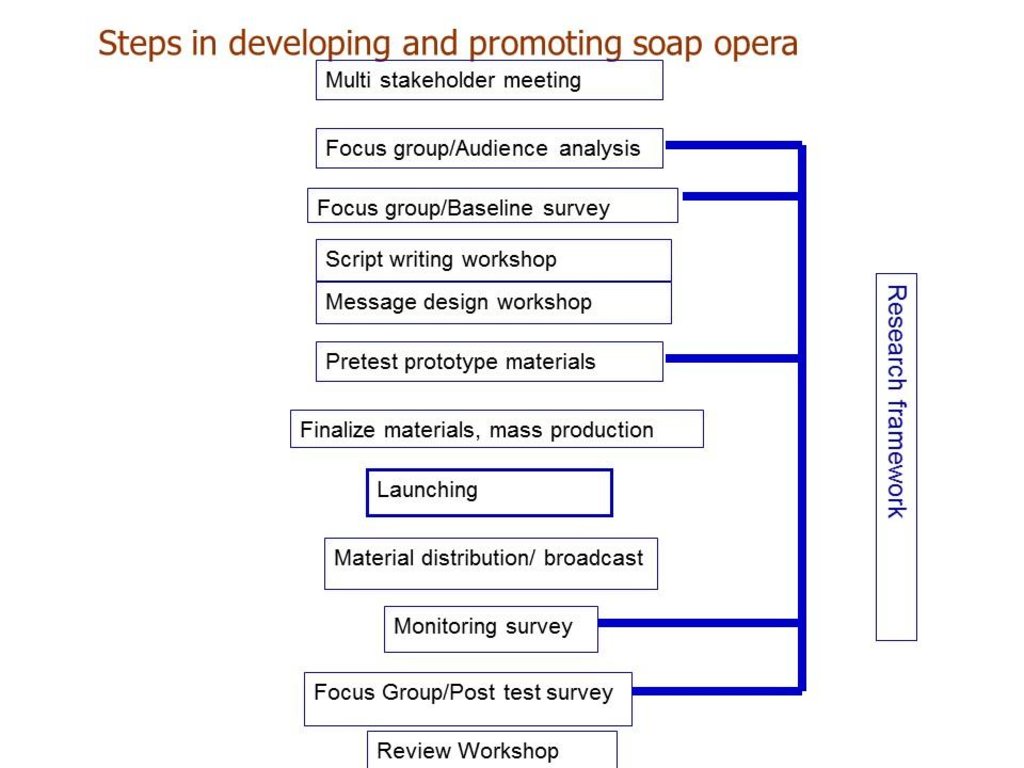Entertainment-education for ecological engineering [Vietnã]
- Criação:
- Atualização:
- Compilador/a: Monina Escalada
- Editor: –
- Revisores: Fabian Ottiger, Deborah Niggli
Cong Nghe Xanh (Vietnamese)
approaches_2613 - Vietnã
Veja as seções
Expandir tudo Recolher tudo1. Informação geral
1.2 Detalhes do contato das pessoas capacitadas e instituições envolvidas na avaliação e documentação da abordagem
Especialista em GST:
Heong Kong Luen
+60 11-3604 7833
kl.heong@gmail.com
Centre for Agricultural BioSciences International (CABI) South East Asia Regional Centre
PO Box 210, 43400 UPM Serdang
Malásia
Especialista em GST:
Settele Josef
+49(0)345 558 5320
Josef.Settele@ufz.de
Helmholtz-Zentrum für Umweltforschung GmbH - UFZ
Theodor-Lieser-Straße 4 Halle 06120
Alemanha
Nome do projeto que facilitou a documentação/avaliação da Abordagem (se relevante)
Book project: Making sense of research for sustainable land management (GLUES)Nome da(s) instituição(ões) que facilitou(ram) a documentação/avaliação da Abordagem (se relevante)
Visayas State University (VSU) - FilipinasNome da(s) instituição(ões) que facilitou(ram) a documentação/avaliação da Abordagem (se relevante)
Helmholtz Centre for Environmental Research (UFZ) - AlemanhaNome da(s) instituição(ões) que facilitou(ram) a documentação/avaliação da Abordagem (se relevante)
Centre for Agricultural BioSciences International (CABI) - Reino Unido1.3 Condições em relação ao uso da informação documentada através de WOCAT
O compilador e a(s) pessoa(s) capacitada(s) aceitam as condições relativas ao uso de dados documentados através do WOCAT:
Sim
2. Descrição da abordagem de GST
2.1 Descrição curta da abordagem
Entertainment-education for ecological engineering involves a series of TV pro-grammes that educate rice farmers about ecosystem services, as well as ecologi-cal engineering techniques to conserve biodiversity in rice landscapes.
2.2 Descrição detalhada da abordagem
Descrição detalhada da abordagem:
Aims / objectives: A multi-stakeholder participatory process was adopted in formative research, then designing and developing a soap-opera series, launching the programme, followed by implementing on-the-ground support, and monitoring of progress. The stakeholders involved were from research, extension, a video production company and local government. To make sure the educational content was accurately and seamlessly woven into drama, the collaborating team was composed of technical experts and scriptwriters, nicknamed the ‘‘turtles and peacocks’’. Each 15-minute episode is composed of 3 parts: a short drama by comedians, an explanation by experts, and then a summary of the lesson portrayed in that particular episode.
Methods: The LEGATO TV series was produced by Viet Idea, a video company based in Ho Chi Minh City, and was broadcast on Long An TV (LA34) weekly for 20 weeks. The 18 episodes were based on the values grid that LEGATO scientists had developed. They covered a range of topics including organic matter decomposition, organisms and microorganisms, straw burning, rural habitats, the food chain, the architecture of traditional houses, the role of silicon in rice production, honey bees, plant health, eco-tourism and eco-engineering.
Stages of implementation: To popularize and enhance the viewership of the LEGATO Ecological Engineering TV series, a “Meet the Actors Day” was organized in Khanh Hau village, Tan An Town, Long An Province. The organisers comprised “Cong Nghe Xanh”, Long An TV (LA34), Y Tuong Viet (Idea Vietnam), and the Southern Regional Plant Protection Centre. The event was attended by the village People’s Committee Chair, farmers, Long An TV staff and plant protection officers. The “Meet the Actors” day is one of the elements in the entertainment-education approach. To track viewership and audience reactions to the TV series, four focus group discussions (FGDs) were conducted with 41 rice farmers in four villages in Long An province. A post-broadcast survey was carried out in January 2015 among 396 randomly selected rice farmers in Long An and Tien Giang Provinces.
Role of stakeholders: The role of the different stakeholders in the approach was as follows: 1) Farmers provided feedback on the relevance and usefulness of the TV episodes and sug-gested other topics; 2) Plant protection officers worked with TV episode scriptwriters and served as subject matter specialists to simplify the educational content of each episode; 3) Local plant protection experts provided the scientific explanation behind the topics tackled in the episodes; 4) Local government was represented by Dr Nguyen Van Khang, former Director of Agriculture in Tien Giang province who agreed to allocate a portion of the provincial pesticide budget into ecological engineering demonstrations as he required data to be generated locally. Since then, from 2010 to 2014, more demonstration fields were set up.
Other important information: Preliminary analyses showed no significant differences in farmers’ insecticide use, but significant differences were found in beliefs and positions about growing flowers, biocontrol, and silicon use. A follow-up farmer survey was conducted to further eval-uate the effects of the TV series on rice farmers in Tien Giang and Long An Provinces.
2.3 Fotos da abordagem
2.5 País/região/locais onde a abordagem foi aplicada
País:
Vietnã
Região/Estado/Província:
Long An and Tien Giang
Especificação adicional de localização:
Tan An town, Tan Tru, Thu Thua, Ben Luc, Chau Thanh,Tan Phuoc, Cai Lay
Map
×2.6 Datas de início e término da abordagem
Indique o ano de início:
2014
Ano de término (caso a abordagem não seja mais aplicada):
2016
2.7 Tipo de abordagem
- Iniciativa/inovação local recente
2.8 Principais metas/objetivos da abordagem
The Approach focused on SLM only (reducing insecticide use, restoring biodiversity in rice landscapes )
Improve farmers’ pest management, reduce their insecticide use and improve their land use to include conservation of biodiversity.
The SLM Approach addressed the following problems: Lack of funds to support SLM; Unregulated pesticide marketing continues to negate the gains obtained by SLM.
2.9 Condição que propiciam ou inibem a implementação de tecnologia/tecnologias aplicada(s) segundo a abordagem
Normas e valores sociais/culturais/religiosos
- Inibitivo
Educate farmers to appreciate parasitoids that are too tiny to be seen by the naked eye.
Treatment through the SLM Approach: As the parasitoids and bees belong to the same insect group, hymenoptera, we associated parasitoids with bees that farmers are familiar with.
Disponibilidade/acesso a recursos e serviços financeiros
- Inibitivo
Funds to support education system.
Treatment through the SLM Approach: Encourage local governments to provide support.
Quadro institucional
- Inibitivo
Lack of direct linkage between agricultural and TV broadcast stations.
Treatment through the SLM Approach: Use stakeholder meetings and field activities to establish these new links.
Quadro jurídico (posse de terra, direitos de uso da terra e da água)
- Propício
The existing land ownership, land use rights / water rights helped a little the approach implementation
Conhecimento sobre GST, acesso a suporte técnico
- Inibitivo
Technical information.
Treatment through the SLM Approach: Explore research findings for information.
Carga de trabalho, disponibilidade de força de trabalho
- Inibitivo
Lack of work force dedicated to this entertainment-education process.
Treatment through the SLM Approach: Encourage provincial government to allocate more staff who can simplify and disseminate scientific information.
Outro
- Inibitivo
Unregulated pesticide sales continue to erode gains from education.
Treatment through the SLM Approach: Encourage government to review and reform current pesticide sales regulations.
3. Participação e papel das partes interessadas envolvidas
3.1 Partes interessadas envolvidas na abordagem e seus papéis
- Usuários de terra/comunidades locais
Communication specialist (female), regional director of plant protection (male), ecologist (male)
Farmers, male and female, Vietnamese
- Especialistas em GST/ consultor agrícola
Ecologist (male), plant protection director (male)
- Pesquisadores
Visayas State University, Leyte, Philippines
- Governo local
Local government of Long An province
People's Committee chair (provincial)
- Governo nacional (planejadores, responsáveis pelas decisões)
- Organização internacional
Center for Agricultural BioSciences International (CABI), Malaysia
3.2 Envolvimento do usuários de terra/comunidades locais nas diferentes fases da abordagem
| Envolvimento do usuários de terra/comunidades locais | Especifique quem estava envolvido e descreva as atividades | |
|---|---|---|
| Iniciação/motivação | Passivo | SLM promoters |
| Planejamento | Participativo | All stakeholders |
| Implementação | Automobilização | All stakeholders |
| Monitoramento/avaliação | Automobilização | SLM promoters and local implementers |
| Research | Participativo | SLM promoters |
3.3 Fluxograma (se disponível)
Descrição:
Steps in developing and promoting a soap opera
Autor:
Kong Luen Heong, Monina Escalada (CABI, Kuala Lumpur; Visayas State University)
3.4 Decisão sobre a seleção de tecnologia/tecnologias de GST
Especifique quem decidiu sobre a seleção de tecnologia/tecnologias a serem implementadas:
- Principalmente especialistas em GST, após consulta com usuários da terra
Explique:
A stakeholder consultation workshop was organized at the initial stage.
Decisions on the method of implementing the SLM Technology were made by mainly by SLM specialists with consultation of land users. Through stakeholder consultation and focus group discussions
4. Suporte técnico, reforço das capacidades e gestão do conhecimento
4.1 Reforço das capacidades/formação
Foi oferecida formação aos usuários da terra/outras partes interessadas?
Sim
Especifique quem foi capacitado:
- Usuários de terra
- Equipe de campo/consultores
Tipo de formação:
- Em exercício
- Agricultor para agricultor
- Áreas de demonstração
- Reuniões públicas
Tipo de formação:
- Communication campaign
Assuntos abordados:
Principles of ecological engineering and pest management
4.2 Serviço de consultoria
Os usuários de terra têm acesso a um serviço de consultoria?
Sim
- Consultation
4.3 Fortalecimento da instituição (desenvolvimento organizacional)
As instituições foram fortalecidas ou estabelecidas através da abordagem?
- Não
4.4 Monitoramento e avaliação
Monitoramento e avaliação são partes da abordagem?
Sim
Comentários:
socio-cultural aspects were regular monitored by land users through observations
socio-cultural aspects were regular monitored by land users through measurements
There were no changes in the Approach as a result of monitoring and evaluation
There were no changes in the Technology as a result of monitoring and evaluation
4.5 Pesquisa
A pesquisa foi parte da abordagem?
Sim
Especifique os tópicos:
- Ecologia
Dê mais detalhes e indique quem realizou a pesquisa:
Research was carried out on-farm
5. Financiamento e apoio material externo
5.1 Orçamento anual para o componente de GST da abordagem
Caso o orçamento exato seja desconhecido, indique a faixa:
- 10.000-100.000
Comentários (p. ex. principais fontes de recursos/principais doadores):
Approach costs were met by the following donors: international (German Ministry of Education and Research, BMBF (70,000 USD)): 70.0%; government (30,000 USD): 30.0%
5.2 Apoio financeiro/material concedido aos usuários da terra
Os usuários da terra receberam apoio financeiro/material para a implementação de tecnologia/tecnologias?
Sim
5.3 Subsídios para entradas específicas (incluindo mão-de-obra)
- Agrícola
| Especifique quais entradas foram subsidiadas | Em que medida | Especifique os subsídios |
|---|---|---|
| Flower seedlings | Parcialmente financiado | |
Se a mão-de-obra pelos usuários da terra foi uma entrada substancial, isso foi:
- Voluntário
5.4 Crédito
Foi concedido crédito segundo a abordagem para atividades de GST?
Não
6. Análise de impactos e declarações finais
6.1 Impactos da abordagem
A abordagem auxiliou os usuários da terra a implementar e manter as tecnologias de GST?
- Não
- Sim, pouco
- Sim, moderadamente
- Sim, significativamente
Reduction in fertilizer and pesticide use
A abordagem concedeu autonomia aos grupos social e economicamente desfavorecidos?
- Não
- Sim, pouco
- Sim, moderadamente
- Sim, significativamente
A abordagem melhorou as questões de posse de terra/diretos do usuário que inibiam a implementação das tecnologias de GST?
- Não
- Sim, pouco
- Sim, moderadamente
- Sim, significativamente
The problem is likely to be overcome in the near future.
Did other land users / projects adopt the Approach?
- Não
- Sim, pouco
- Sim, moderadamente
- Sim, significativamente
Did the Approach lead to improved livelihoods / human well-being?
- Não
- Sim, pouco
- Sim, moderadamente
- Sim, significativamente
Did the Approach help to alleviate poverty?
- Não
- Sim, pouco
- Sim, moderadamente
- Sim, significativamente
6.2 Principal motivação dos usuários da terra para implementar a GST
- Produção aumentada
- Lucro (lucrabilidade) aumentado, melhora da relação custo-benefício
- Consciência ambiental
6.3 Atividades de sustentabilidade de abordagem
Os usuários da terra podem manter o que foi implementado através da abordagem (sem apoio externo)?
- Incerto
6.4 Pontos fortes/vantagens da abordagem
| Pontos fortes/vantagens/oportunidades na visão do usuário da terra |
|---|
| Our research partners find the use of Entertainment-Education an easy approach to implement as there is often a warm response from the audience - farmers, women's groups and local government officials. |
| Pontos fortes/vantagens/oportunidades na visão do compilador ou de outra pessoa capacitada |
|---|
|
The use of entertainment-education approach has been found to be highly successful in Vietnam. An evaluation survey of a radio drama program we launched in 2004, after completion of the program, showed that farmers who had listened to at least two episodes of the program reduced their insecticide sprays by 60%, their fertilizer and seed rates by 9% and 33% respectively (Heong et al., 2008). (How to sustain/ enhance this strength: It can be sustained if there is funding to support the activities.) |
6.5 Pontos fracos, desvantagens da tecnologia e formas de superá-los
| Pontos fracos/desvantagens/riscos na visão do usuário da terra | Como eles podem ser superados? |
|---|---|
| The land users would rely on funding to be able to implement this approach as there is a cost in producing the TV series. |
| Pontos fracos/vantagens/riscos na visão do compilador ou de outra pessoa capacitada | Como eles podem ser superados? |
|---|---|
| An important challenge is the longer-term sustainability of the TV series. The challenge is to mainstream such programs into the TV station’s regular programming. To maintain a long TV series will require funding. A further threat to sustain the gains made by the TV series is “advertising piracy” where the TV series is being used to advertise new pesticides. |
7. Referências e links
7.1 Métodos/fontes de informação
- visitas de campo, pesquisas de campo
- entrevistas com usuários de terras
7.2 Referências às publicações disponíveis
Título, autor, ano, ISBN:
Westpal, Catrin, Vidal, Stefan, Horgan, Finbarr G., Gurr, Geoff M., Escalada, Monina, Chien, Ho Van, Tscharntke, Teja, Heong, Kong Luen & Settele, Josef. (2015). Promoting multiple ecosystem services with flower strips and participatory approaches in rice production landscapes. Basic and Applied EcologyHeong, K.L., Escalada, M.M., Chien, H.V. and Cuong, L,Q. 2014. Restoration of rice landscape biodiversity by farmers in Vietnam through education and motivation using media. In G. Mainguy (ed) Special issue on large scale restoration of ecosystems. S.A.P.I.E.N.S (online) Vol 7 No. 2. http://sapiens.revues.org/1578. Electronic ISSN 1993-3819Heong, K.L., Escalada, M.M., Huan, N.H., Ky Ba, V.H., Quynh, P.V., Thiet, L.V. and Chien, H.V. 2008. Entertainment-Education and rice pest management: A radio soap opera in Vietnam. Crop Protection, 27: 1392-1397.
Disponível de onde? Custos?
Basic and Applied EcologyG. Mainguy (ed) Special issue on large scale restoration of ecosystems. S.A.P.I.E.N.S (online) Vol 7 No. 2. http://sapiens.revues.org/1578. Electronic ISSN 1993-3819 Crop Protection, 27: 1392-1397.
Título, autor, ano, ISBN:
Heong, K.L., Escalada, M.M., Chien, H.V. and Cuong, L,Q. 2014. Restoration of rice landscape biodiversity by farmers in Vietnam through education and motivation using media. In G. Mainguy (ed) Special issue on large scale restoration of ecosystems. S.A.P.I.E.N.S (online) Vol 7 No. 2. http://sapiens.revues.org/1578. Electronic ISSN 1993-3819
Disponível de onde? Custos?
G. Mainguy (ed) Special issue on large scale restoration of ecosystems. S.A.P.I.E.N.S (online) Vol 7 No. 2. http://sapiens.revues.org/1578. Electronic ISSN 1993-3819
Título, autor, ano, ISBN:
Heong, K.L., Escalada, M.M., Huan, N.H., Ky Ba, V.H., Quynh, P.V., Thiet, L.V. and Chien, H.V. 2008. Entertainment-Education and rice pest management: A radio soap opera in Vietnam. Crop Protection, 27: 1392-1397.
Disponível de onde? Custos?
Crop Protection, 27: 1392-1397.
Links e módulos
Expandir tudo Recolher tudoLinks
Não há links
Módulos
Não há módulos


